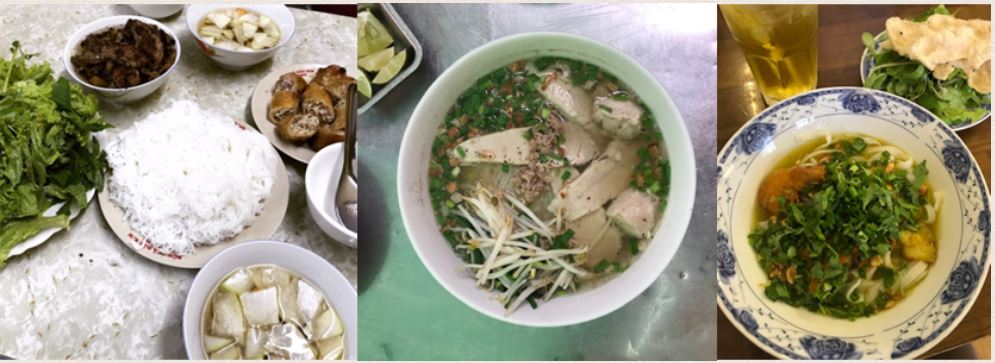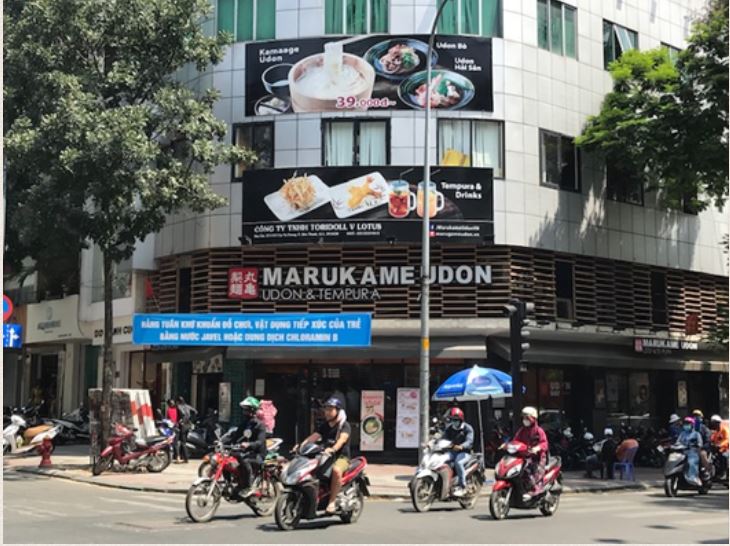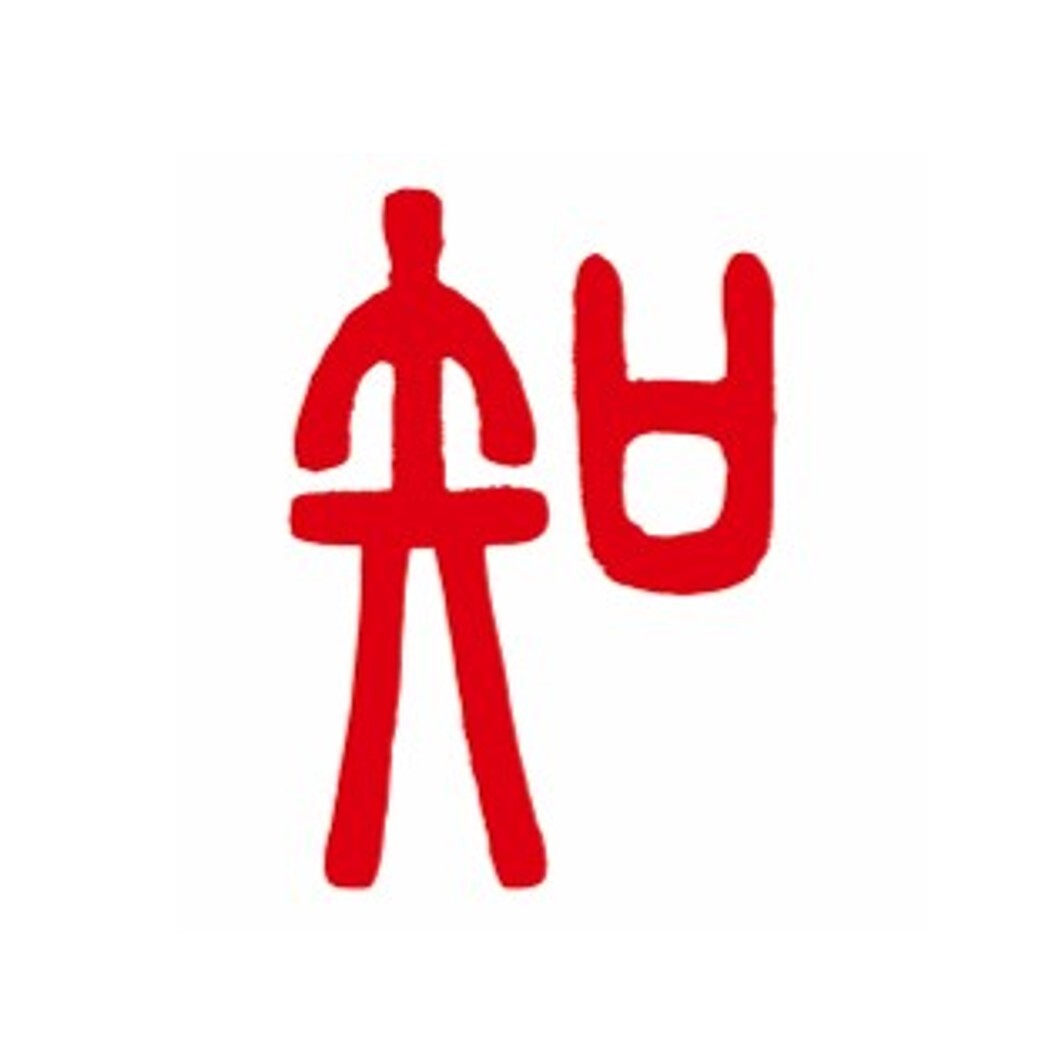<Report from overseas office> [Vietnam] Vietnam, a country of noodles, not just pho
- Release date: Nov 16, 2018
- 7074 Views
Pho is not the only noodle dish in Vietnam, a variety of Vietnamese noodle dishes.
Pho is a flat rice noodle dish that originated in the north of Vietnam. Pho is a flat rice-flour noodle soup that originated in the north of the country, and is characterized by a lightly seasoned broth in the north and a slightly sweet soup in the south. However, there are many other types of rice noodles in Vietnam, not just pho. In particular, the rice flour noodle called "Bun" seems to be more familiar throughout Vietnam than Pho. While pho is a flat, steamed dough that is cut into thin strips, bun is made by placing the noodle seeds in a mold and extruding them like kokoroten.Specialties made with buns can be found all over Vietnam. Hanoi's "Bun Cha" is made by dipping buns in a sweet sauce containing charcoal-grilled pork and tsukune, like dipping noodles. Bun Bo Hue, a specialty of central Hue, is a noodle dish with thick buns in a spicy broth. In the south, "Bun Thit Nuong" is a soup-less noodle dish with grilled pork, fried spring rolls, herbs, peanuts, etc., topped with sweet sauce and mixed together.
In addition to pho and bun, "fu tieu," rice flour noodles that are cut into thin strips after the dough has been semi-dried, are also commonly eaten in the south. While pho is soft and slippery, phu thieu is characterized by its firmness.
In the central region of Da Nang, "mee quan" is a famous dish made of thick rice noodles like kishimen noodles and served in a thick broth of stewed ingredients.

From left to right: Bun Cha, Huu Tieu, and Mee Quan.
A country that consumes a large amount of instant noodles
As there is a wide variety of noodle dishes, there is also a great deal of variation in instant noodles. Ace Cook, which has the largest share of the instant noodle market in Vietnam, has a product lineup of more than 50 varieties. In addition to the traditional yellow shriveled noodles, there are also rice flour instant noodles such as the Vietnamese specialty pho, Bun Bo Hue and Phu Tieu. These rice-flour instant noodles are made using the same method as fresh noodles are made (cutting the material into sheets for pho and extruding it for bun), which seems to make a difference in texture. Perhaps it is the Japanese method of production with its attention to detail that has given Vietnam the No. 1 market share.In fact, Vietnam is a massive consumer of instant noodles, ranking 5th in the world with 5.06 billion servings consumed in 2017 (World Ramen Association, 2017). Also, unlike Japan, bagged noodles are more common than cup noodles. However, they are the type that can be put back in hot water without boiling. There is a bowl of noodles in the pantry of our office, and I often see employees eating bagged noodles for lunch. In Vietnam, where people have the custom of eating noodles for lunch as well as breakfast, some people eat instant noodles for breakfast.
It is also common to use only instant noodles. They put them in a hot pot, use them as fried noodles, and even add instant noodles to homemade soup made by simmering beef or pork bones and meat. If you are going to the trouble of making soup from scratch, why not use fresh, uncooked noodles instead of instant noodles?
But perhaps that is how much instant noodles have become a part of our daily diet.
A scene from a weekend potluck with colleagues outdoors.
Marugame Seimen's Localization Success Story
Vietnam has a wide variety of unique noodle dishes, but especially in Ho Chi Minh City, the number of restaurants serving foreign noodle dishes, such as udon, ramen, and pasta, has been increasing in recent years. Among them, Marugame Seimen is one of the most popular restaurants that has successfully localized its products and services. The first thing that differs from Japanese stores is the firmness of the noodles. Udon noodles are less firm in Vietnamese stores. This is probably because Vietnamese people, who are used to relatively soft rice flour noodles, find it easier to eat noodles with less firmness. The soup is not only soy sauce based, but also pork bone, spicy seafood, spicy pork, and many other variations.Furthermore, the all-you-can-eat condiments section offers pak choi (cilantro). Aromatic herbs are indispensable in Vietnamese noodle dishes. When you order a noodle dish at a restaurant, you will be presented with a plate of various herbs, which you tear off by hand and put on the noodles. For such herb-loving Vietnamese, the all-you-can-eat pak choi is probably a great service.

As a side note, KFC, which has more than 140 stores in Vietnam, offers a fried chicken and rice set. This is a localized version for the rice-loving Vietnamese!
-

Author profile
(Ms.) Itsuko Yamazaki
Female researcher who has lived in Vietnam for two years. She has been involved in many market research projects mainly in Southeast Asia. She specializes in home visit surveys and ethnography, where she directly observes the lives of consumers.
-

Editor profile
Intage Inc.
―
 Global Market Surfer
Global Market Surfer CLP
CLP